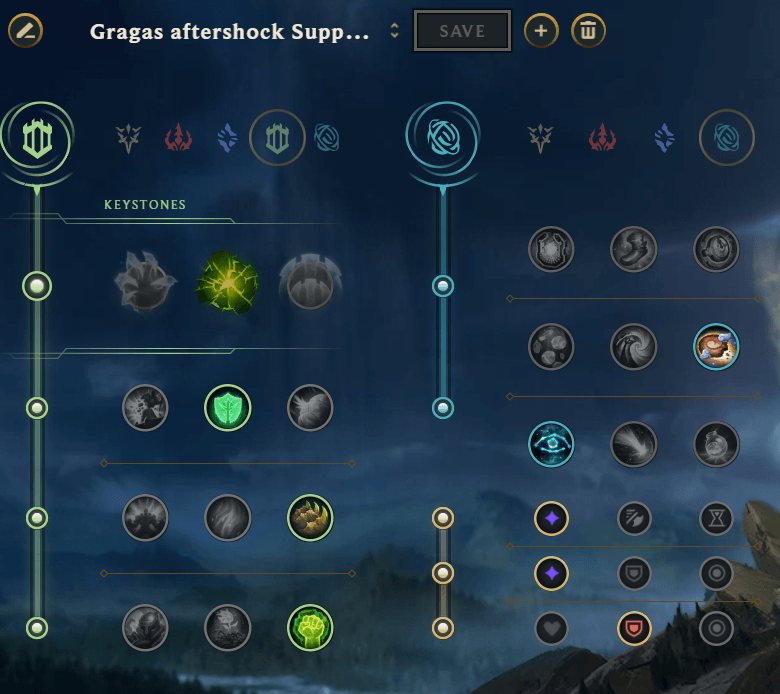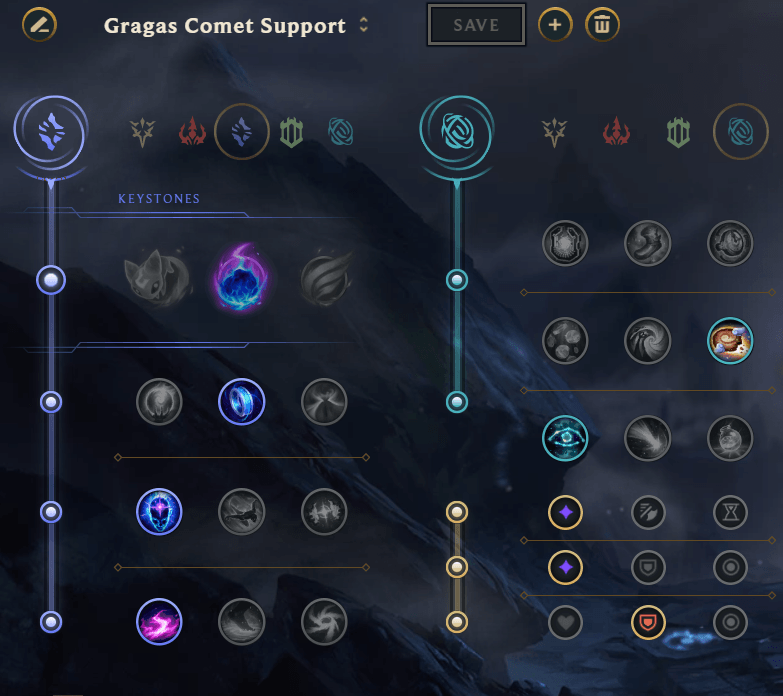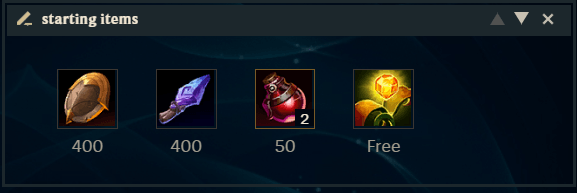A Guide to Gragas Support
This guide will teach you how to play Gragas Support and why the fat man has recently become one.
This guide will teach you how to play Gragas Support and why the fat man has recently become one.
If you watch pro play, you would see that Gragas, while not the most popular, has been picked enough to validate his position as a Support. One of the first reasons for this is that Gragas is a flex pick. Similar to when Sett was played in several roles, Gragas can play Top, Jungle (although rarely in this meta), or Support. Gragas Top has recently become more popular as well due to the fact he goes even against Camille and is another reliable source of magic damage. Since Gragas Top is popular, he is now a viable flex pick into several positions. Another reason Gragas is now viable at Support is he is a counter to several popular champions in the Bot Lane. For example, Gragas can counter both Alistar and Leona engages with his Body Slam (E) because it takes Crowd Control priority. What that means is that, if Alistar uses his Headbutt (W) against a Gragas who is Body Slamming, the Body Slam will take priority and the Alistar Headbutt will have no effect. He can also be a slight bully in lane with a little bit of Ability Power through his Barrel Roll (Q), and his passive Happy Hour keeps him sustained against poke-heavy lanes.
There are two different main Rune pages you would want to use depending on the matchup.

This first Rune page is the most common one, especially if against something like Alistar or Leona. These runes allow you to counter-engage and stay relatively healthy while also providing sustain with Biscuit Delivery and Font of Life. Aftershock is an extremely powerful tanking tool, but since it has a relatively short up time, it is important to use it to its full extent by holding on to your CC until you need to. Gragas is all about patience, which we will talk about. The only change I would recommend is potentially switching Bone Plating to Second Wind if they are very poke heavy and you don’t expect to take a lot of damage in quick succession.

The other potential Rune page is an Arcane Comet-based one that is more focused on harassing in lane. Let’s say you picked Gragas blind as a flex, but then you end up facing someone like Lulu or Bard in lane. Here it would be more beneficial to take Arcane Comet so you can harass your enemies in lane since you are less worried about having to counter-engage. Similarly to the last page, you take Biscuit Delivery for increased sustain along with Manaflow Band since you will be tossing out those barrels on cooldown.
Gragas Support can choose between running the starting support item of Relic Shield or Spellthief’s Edge. The choice for this should follow the same choice for Runes: Relic Shield with Aftershock, and Spellthief’s Edge with Arcane Comet.

When choosing your Mythic there are also two options: the more typical Imperial Mandate or sometimes Shurelya’s Battlesong. This choice is more based on your team composition and less about laning, since they have the same basic component items. Imperial Mandate has more damage and is better if your team could use that extra bit of magic damage from you, but it is also just a great way to catch people out since it can speed you up when you slow them along with the bonus damage. This is the standard mythic because most of your tankiness will then come from your Aftershock, or if you take Arcane Comet you will be relatively squishy and just have to play more carefully.
Shurelya’s Battlesong (my personal favorite item) is better for a team composition that wants to engage fast and could use the movement speed well. For example, if you have an Udyr, Hecarim, or Olaf on your team, it is really good to have Shurelya’s because it provides a more reliable engage. While building your mythic, you want to pick up basic boots and then upgrade them whenever you think you need them. Personally, I would recommend going with either Mercury Treads or Plated Steelcaps for some more tankiness. Your next full item should usually be Zhonya’s Hourglass.
This item is great on Support Gragas because it gives you more armor and lets you stall for your team to collapse after you engage. If your opponent is heavily magic damage based, you can switch this item out for Abyssal Mask. Abyssal Mask helps increase your team's damage while boosting your own tankiness, especially against magic damage. Your third item gets fairly situational. If you get this far into your game, you want to see how you and your team are doing. If you are doing really well and pumping out damage go with Morellonomicon as it is always important to have one on your team. If your team already has one or for example your ADC is doing tons of damage, maybe look into Zeke’s Convergence.
This is another very efficient Support item that boosts your Accomplice’s (most likely your ADC) damage while giving you more tank stats. You could also potentially get Knight’s Vow to further protect your ADC. For past three items, you can fill in whatever the team needs, usually with the other items I listed that you have not yet built.

Similar to the build and runes, your ability points depend on your matchup. Level 1, I typically recommend taking E so either you can engage or prevent one from your enemy. You can start Q if you think there is no chance of an extended fight with your enemies. At level 2, take either your Q or E, whichever you have not leveled yet. At level 3, finish your basic abilities by learning your W. This is the point where it becomes more matchup dependent. If you are going Arcane Comet and/or Spellthief's Edge, you might want to max your Q first for the increased harass as it does do significant damage. In most matchups though, an E max will do just fine as it will decrease the cooldown so you can CC your enemy more often. Just as with your level 2, max second either your Q or E, whichever you haven't yet. Finally, if it gets that far, max your W last. As a support, your W does not provide very much utility as your main purpose is to disrupt in teamfights and harass in lane.
Gragas in lane functions differently depending on the matchup. First, I will cover Gragas as the counter to an engage support like Alistar, Leona, or most recently, Rell. In this matchup, you have to be extremely patient and just wait for them to engage. Your job is to stifle them and set up for a counter-engage. You can harass when possible with your Q, but pay close attention to the enemy Support so you can land your E. This is critical. If you miss your E or use it too early, you put your ADC and yourself into a bad spot that can be punished, but if you play it well, the enemy’s engage is shut down allowing you and your ADC to counter attack. Gragas’ high base damage with his Q and E and his innate tankiness with his Drunken Rage (W) allow him to be a perfect counter-engage support in the Bot Lane. Use your Ultimate, Explosive Cask (R), at your discretion, but be careful not to save your opponents or doom your allies.
Now when playing Gragas Support against enchanters or other harassers, you become the one to start fights. Here you can continue harassing whenever you can with your Q, but begin looking for opportunities to all in with your E and R. This is when he is played like any other engage support. Also, make sure to roam with your Jungle to find ganks Mid or to invade the enemy Jungle. Gragas can be a great disruptor around the map, since he can travel over walls and seperate enemies in skirmishes. In some very specific matchups, your duty is more similar to that of Brand with a little extra engage and disengage. When against a melee support without a lot of engage, like Braum or Taric, Gragas excels as someone who can safely harass the enemy ADC and support.
Since you heal with your passive, you can take some slight poke from the enemy ADC and still win the trade with the damage from your Q, especially if you have Arcane Comet and Scorch. This style is still more risky since it does leave the enemy with a window to engage on you if you cannot poke them down enough to gain a significant advantage.
If I haven’t made it clear enough, Gragas is an exceptional counter-engage champion who does require proper skill. He is difficult to execute to the greatest of his ability because you need to have quick reaction times and patience. If played correctly, though, he does a great job frustrating the enemy and punishing them for even thinking they have a chance against the Rabble Rouser.